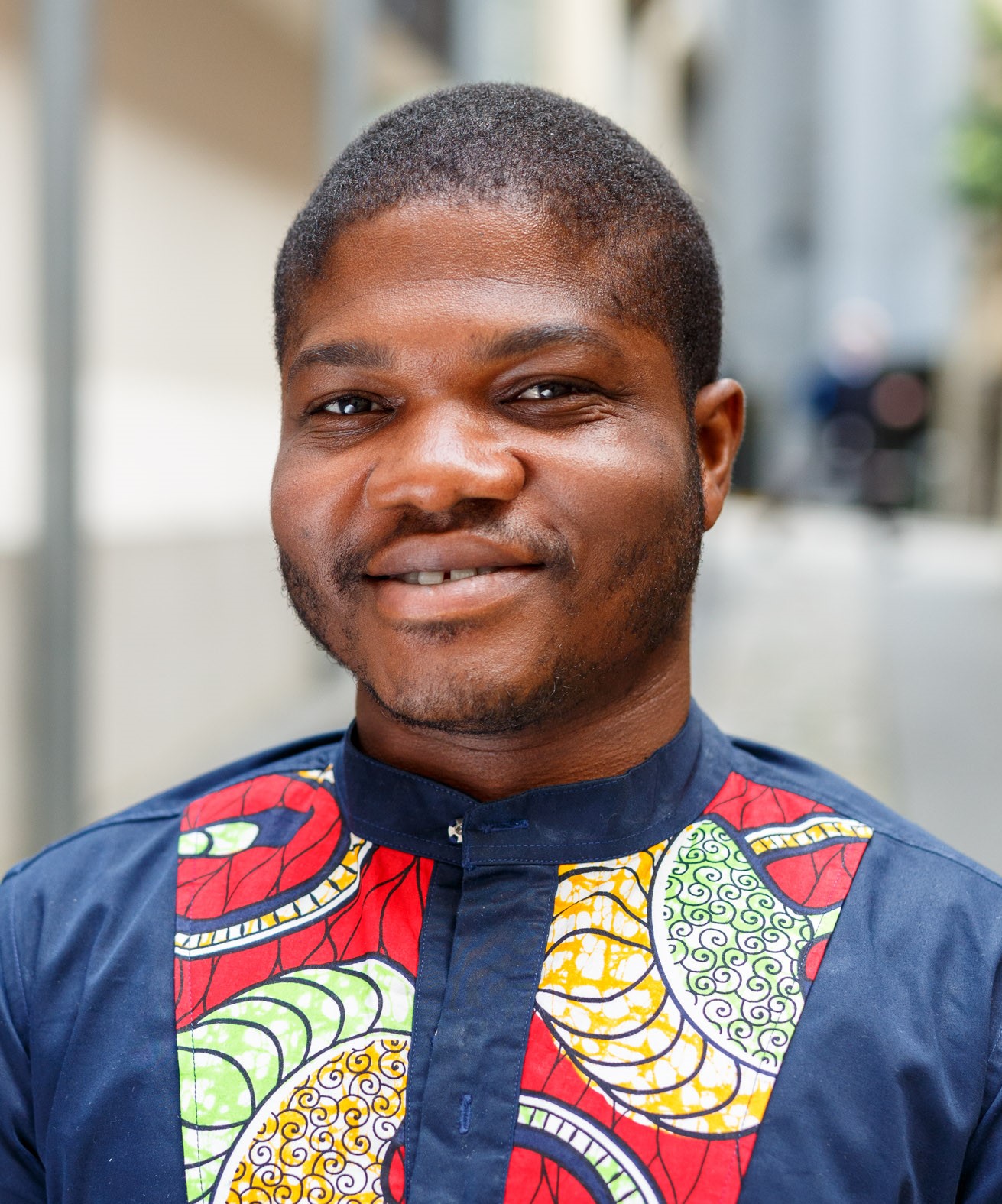Blood Center/Blood Hospital-Based Donor Center
(P-BC-2) Docudrama Intervention to Encourage Repeat Blood Donations in Ghana: A Pilot Study, BLOODSAFE Ghana Study
Sunday, October 20, 2024
12:00 PM - 1:00 PM

Emmanuel Nene N. Dei, BSc, MHAPL
National Blood Service Ghana
Accra, Greater Accra, Ghana
Presenting Author(s)
Background/Case Studies: This pilot study assessed the potential of a docudrama intervention to encourage return donation attempts among first-time donors in Ghana.
Study
Design/Methods: Ten first-time voluntary non-remunerated blood donors (VNRBD) and 3 family replacement donors (FRD) were enrolled as part of a pilot study to evaluate the feasibility of using the docudrama to increase repeat blood donation and watched two episodes of a docudrama, each lasting 15 minutes, in two viewing sessions. Before and after the viewing, all participants completed pre-, and post-docudrama surveys on measures such as blood donation attitude, intention and perceived behavioural control, acceptability and feasibility of the docudrama on a five point Likert scale where 1 is strongly disagree, Unpleasant, Unenjoyable and Frightening; and 5 is strongly agree, Pleasant, Enjoyable, and Not Frightening.
Results/Findings: Participants were fairly knowledgeable about blood donation before the docudrama. After exposure to the docudrama, median responses to “My family thinks I should give blood in the next 4 months” and “If it were entirely up to me, I am confident that I would be able to donate blood in the next 4 months.” increased two points (2.0, [IQR: 1.0-3.0] vs. 4.0, [IQR: 2.0-5.0]) and one point (4.0, [IQR: 4.0-5.0] vs. 5.0, [IQR: 4.0-5.0]), respectively. The belief that “Donated blood is sold” had a median drop of 2.5 points from before (4.5, [IQR: 2.3-5.0]) to after (2.0, [IQR: 1.0-4.0]) watching the docudrama. Median attitude values for donating blood in the next 4 months shifted from “Unpleasant” towards “Pleasant” (4.5 [IQR: 3.0-5.0] to 5.0 [IQR: 3.0-5.0]), from “Unenjoyable” toward “Enjoyable” (3.5 [IQR: 3.0-5.0] to 4.5 [IQR: 3.8-5.0]) and from “Frightening” to “Not frightening” 3.5 [IQR: 2.0-5.0] to 4.5 [IQR: 3.8-5.0]). Median values for beliefs and perceptions about blood (outside of “Donate blood is sold”), most blood donation subjective norms, blood donation intention, acceptability, feasibility and cultural appropriateness of the docudrama showed little to no change from before to after watching the docudrama. Compared to pre-exposure, responses post-exposure to the docudrama had lower percentages of “Yes” for intention to view a docudrama as often as possible (78.6% vs 66.7%) and in the future (85.7% vs 75.0%) and a higher percentage for intention to view in the next 6 months (57.1% vs. 66.7%).
Conclusions: This pilot study is the first to assess the potential of a docudrama to improve return blood donation attempts in Ghana. The findings from this test-run have informed the design, implementation, and evaluation of a larger randomized control trial to evaluate the effectiveness of WhatsApp messaging and docudrama to motivate return blood donation attempts in Ghana.
Study
Design/Methods: Ten first-time voluntary non-remunerated blood donors (VNRBD) and 3 family replacement donors (FRD) were enrolled as part of a pilot study to evaluate the feasibility of using the docudrama to increase repeat blood donation and watched two episodes of a docudrama, each lasting 15 minutes, in two viewing sessions. Before and after the viewing, all participants completed pre-, and post-docudrama surveys on measures such as blood donation attitude, intention and perceived behavioural control, acceptability and feasibility of the docudrama on a five point Likert scale where 1 is strongly disagree, Unpleasant, Unenjoyable and Frightening; and 5 is strongly agree, Pleasant, Enjoyable, and Not Frightening.
Results/Findings: Participants were fairly knowledgeable about blood donation before the docudrama. After exposure to the docudrama, median responses to “My family thinks I should give blood in the next 4 months” and “If it were entirely up to me, I am confident that I would be able to donate blood in the next 4 months.” increased two points (2.0, [IQR: 1.0-3.0] vs. 4.0, [IQR: 2.0-5.0]) and one point (4.0, [IQR: 4.0-5.0] vs. 5.0, [IQR: 4.0-5.0]), respectively. The belief that “Donated blood is sold” had a median drop of 2.5 points from before (4.5, [IQR: 2.3-5.0]) to after (2.0, [IQR: 1.0-4.0]) watching the docudrama. Median attitude values for donating blood in the next 4 months shifted from “Unpleasant” towards “Pleasant” (4.5 [IQR: 3.0-5.0] to 5.0 [IQR: 3.0-5.0]), from “Unenjoyable” toward “Enjoyable” (3.5 [IQR: 3.0-5.0] to 4.5 [IQR: 3.8-5.0]) and from “Frightening” to “Not frightening” 3.5 [IQR: 2.0-5.0] to 4.5 [IQR: 3.8-5.0]). Median values for beliefs and perceptions about blood (outside of “Donate blood is sold”), most blood donation subjective norms, blood donation intention, acceptability, feasibility and cultural appropriateness of the docudrama showed little to no change from before to after watching the docudrama. Compared to pre-exposure, responses post-exposure to the docudrama had lower percentages of “Yes” for intention to view a docudrama as often as possible (78.6% vs 66.7%) and in the future (85.7% vs 75.0%) and a higher percentage for intention to view in the next 6 months (57.1% vs. 66.7%).
Conclusions: This pilot study is the first to assess the potential of a docudrama to improve return blood donation attempts in Ghana. The findings from this test-run have informed the design, implementation, and evaluation of a larger randomized control trial to evaluate the effectiveness of WhatsApp messaging and docudrama to motivate return blood donation attempts in Ghana.
